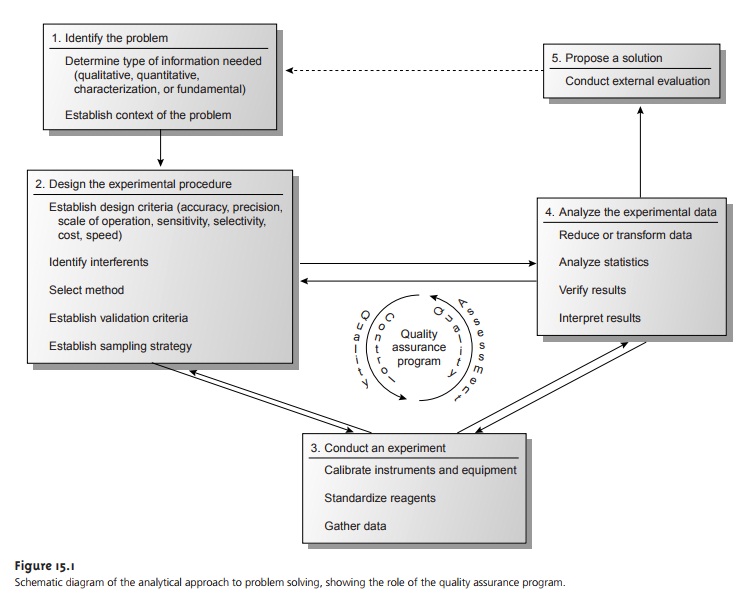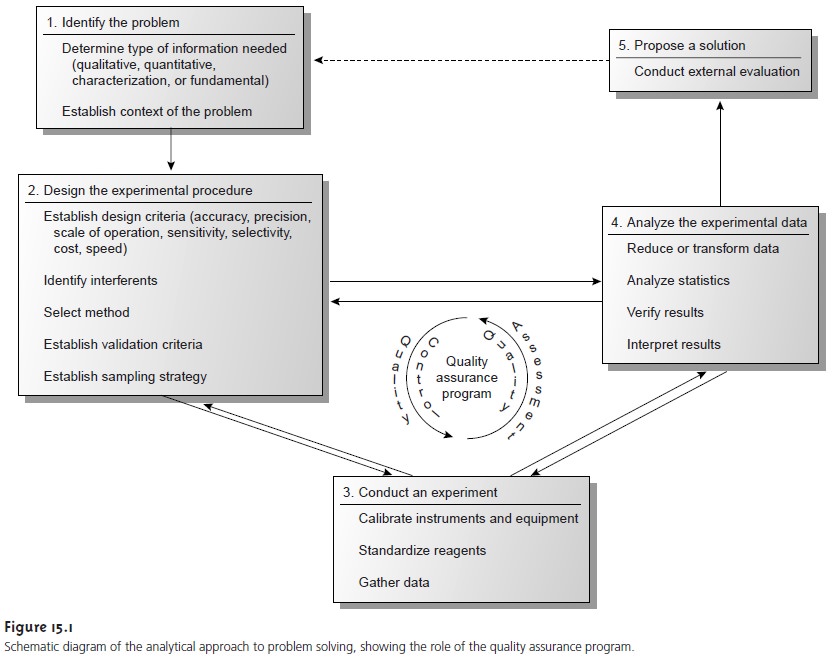Chapter: Modern Analytical Chemistry: Uality Assurance
Uality Assurance

Uality
Assurance
We
have noted that each field of chemistry brings
a unique perspective to the broader discipline of chemistry. For analytical
chemistry this perspective was identified as an approach to solving
problems, which was
presented as a five-step process: (1) Identify and define the problem; (2) Design the experimental procedure; (3) Conduct an experiment and gather data;
(4) Analyze the experimental data;
and Propose a solution
to the problem. The analytical approach, as
presented thus far, appears
to be a straightforward process
of moving from problem-to-solution. Unfortunately (or perhaps fortunately for those who consider themselves to be analytical chemists!), an analysis
is seldom routine. Even
a well-established procedure, carefully followed,
can yield poor data of little use.
An
important feature of the analytical approach, which we have
neglected thus far,
is the presence of a “feedback loop” involving steps 2, 3, and 4. As a result, the
outcome of one step may lead to a reevaluation
of the other two steps.
For example, after
standardizing a
spectrophotometric method for
the analysis of iron we may find
that its sensitivity does
not meet the
original design criteria. Considering this
information we might
choose to select
a different method,
to change the original
design criteria, or to improve
the sensitivity.

The
“feedback loop” in the analytical approach is maintained by a quality
assurance program (Figure
15.1), whose objective is to control systematic and random sources
of error.1–5 The underlying assumption
of a quality assurance program is that results obtained when an analytical
system is in statistical control are free of bias and are characterized by well-defined confidence intervals. When used
properly, a quality assurance program
identifies the practices necessary to bring a system into
statistical control, allows
us to determine if the system remains
in statistical control,
and suggests a course of corrective
action when the system has
fallen out of statistical control.
Related Topics